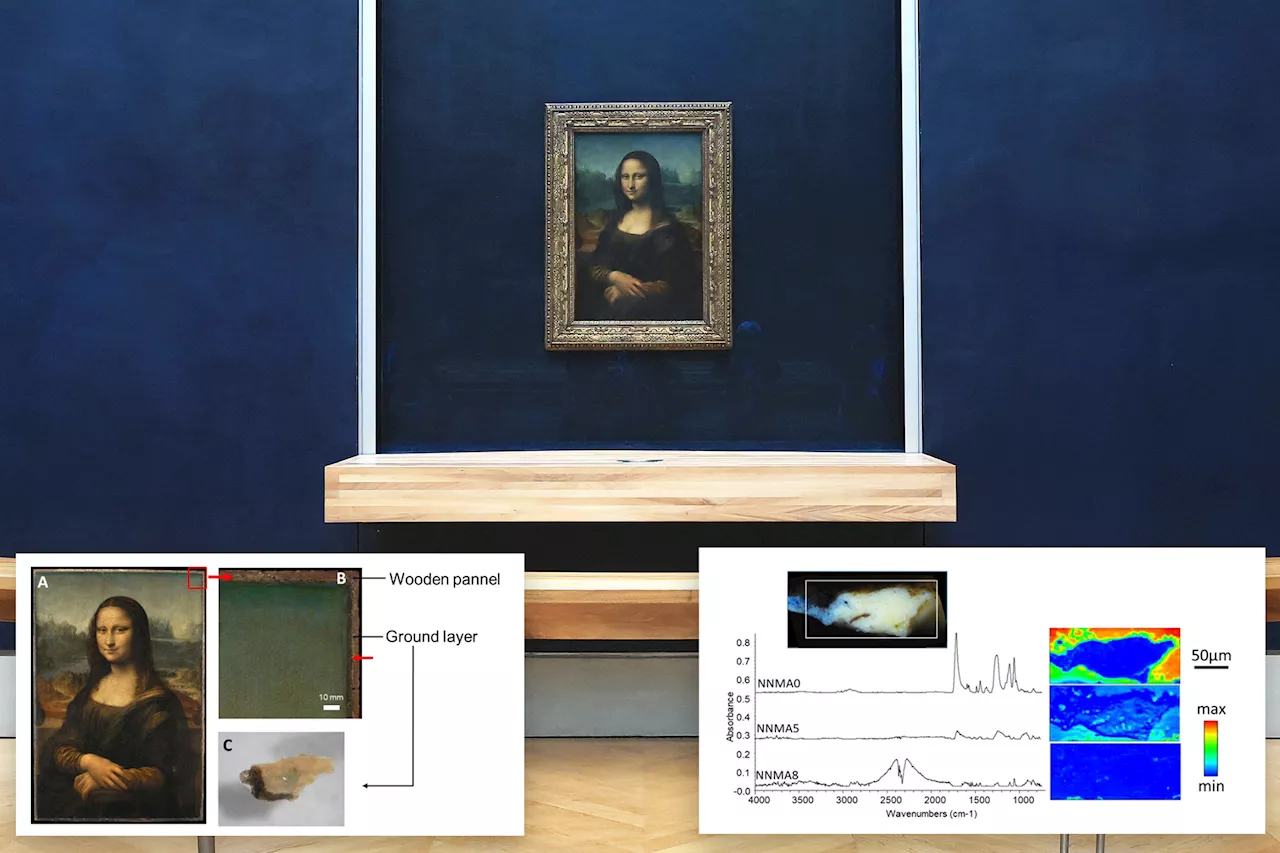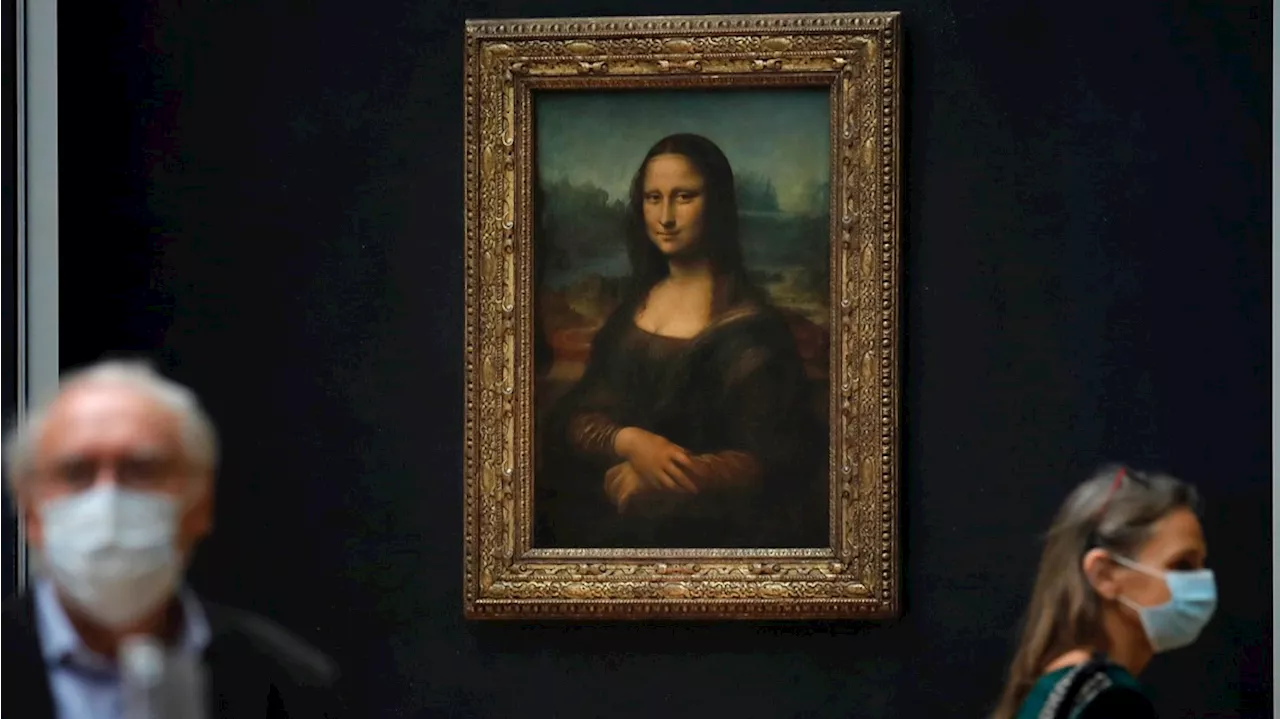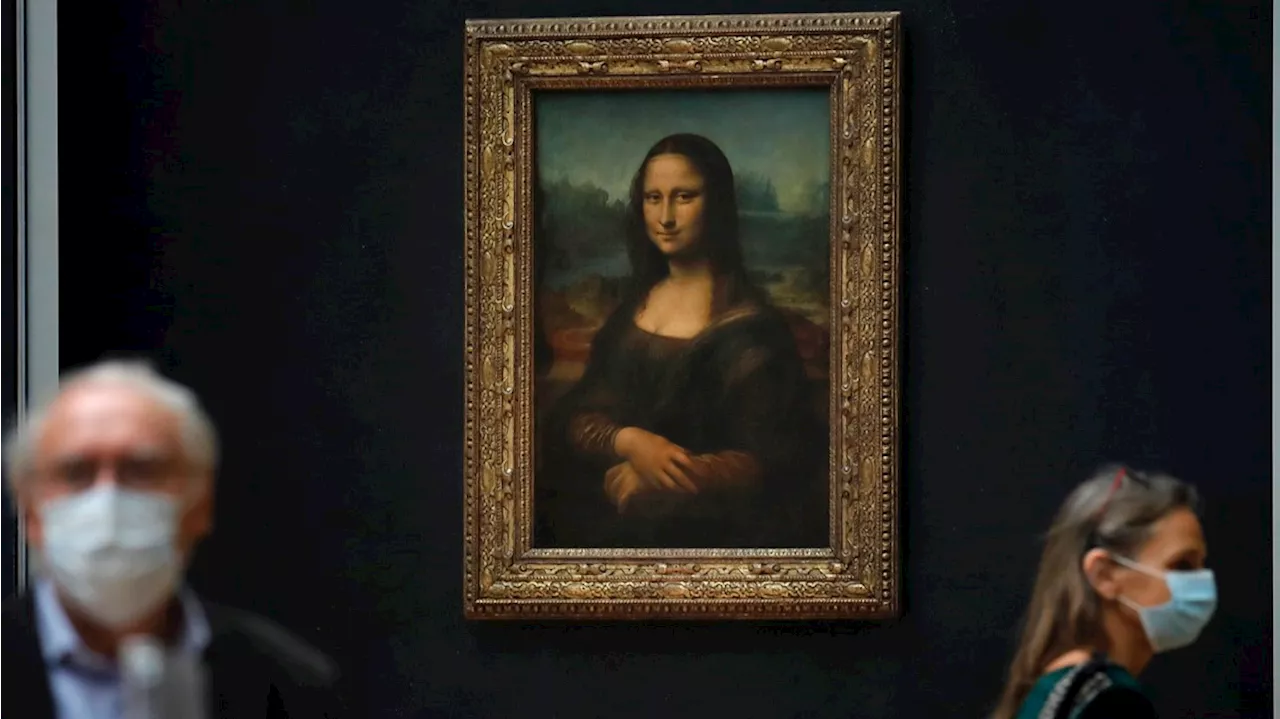Using X-rays to peer into the chemical structure of a tiny speck of the celebrated work of art, scientists have gained new insight into the techniques that Leonardo da Vinci used to paint his groundbreaking portrait of the woman with the exquisitely enigmatic smile.
The research, published Wednesday in the Journal of the American Chemical Society, suggests that the famously curious, learned and inventive Italian Renaissance master may have been in a particularly experimental mood when he set to work on the “Mona Lisa” early in the 16th century.
“In this case, it’s interesting to see that indeed there is a specific technique for the ground layer of ‘Mona Lisa,’” he said in an interview with The Associated Press. Finding plumbonacrite in the “Mona Lisa” attests “to Leonardo’s spirit of passionate and constant experimentation as a painter – it is what renders him timeless and modern,” Bambach said by email.
“Plumbonacrite is really a fingerprint of his recipe,” Gonzalez said. “It’s the first time we can actually chemically confirm it.” Leonardo is thought to have dissolved lead oxide powder, which has an orange color, in linseed or walnut oil by heating the mixture to make a thicker, faster-drying paste.
Österreich Neuesten Nachrichten, Österreich Schlagzeilen
Similar News:Sie können auch ähnliche Nachrichten wie diese lesen, die wir aus anderen Nachrichtenquellen gesammelt haben.
X-rays of the 'Mona Lisa' reveal new secret about Leonardo da Vinci masterpieceNew research suggests the Italian Renaissance master may have been in a particularly experimental mood when painted the 'Mona Lisa' early in the 16th century
Weiterlesen »
 Scientists uncover new secrets about Leonardo da Vinci's 'Mona Lisa'The Louvre Museum where the Mona Lisa resides
Scientists uncover new secrets about Leonardo da Vinci's 'Mona Lisa'The Louvre Museum where the Mona Lisa resides
Weiterlesen »
 Study shares insight on how Leonardo da Vinci painted the ‘Mona Lisa’Samples from Leonardo da Vinci’s “Mona Lisa” and the “Last Supper” suggested that the artist experimented with lead oxide, the Journal of the American Chemical Society said in research that was published Wednesday. Lead oxide causes a rare compound to form under his artwork which is called plumbonacrite.
Study shares insight on how Leonardo da Vinci painted the ‘Mona Lisa’Samples from Leonardo da Vinci’s “Mona Lisa” and the “Last Supper” suggested that the artist experimented with lead oxide, the Journal of the American Chemical Society said in research that was published Wednesday. Lead oxide causes a rare compound to form under his artwork which is called plumbonacrite.
Weiterlesen »
 Scientists pry a secret from the 'Mona Lisa' about how Leonardo painted the masterpieceKFMB's Jeff Zevely shares a collection of stories featuring artists and art that aim to bring joy and inspire others, from pet portraits to glow-in-the-dark murals.
Scientists pry a secret from the 'Mona Lisa' about how Leonardo painted the masterpieceKFMB's Jeff Zevely shares a collection of stories featuring artists and art that aim to bring joy and inspire others, from pet portraits to glow-in-the-dark murals.
Weiterlesen »
 Scientists pry a secret from the 'Mona Lisa' about how Leonardo painted the masterpieceKFMB's Jeff Zevely shares a collection of stories featuring artists and art that aim to bring joy and inspire others, from pet portraits to glow-in-the-dark murals.
Scientists pry a secret from the 'Mona Lisa' about how Leonardo painted the masterpieceKFMB's Jeff Zevely shares a collection of stories featuring artists and art that aim to bring joy and inspire others, from pet portraits to glow-in-the-dark murals.
Weiterlesen »
 Scientists pry a secret from the 'Mona Lisa' about how Leonardo painted the masterpieceKFMB's Jeff Zevely shares a collection of stories featuring artists and art that aim to bring joy and inspire others, from pet portraits to glow-in-the-dark murals.
Scientists pry a secret from the 'Mona Lisa' about how Leonardo painted the masterpieceKFMB's Jeff Zevely shares a collection of stories featuring artists and art that aim to bring joy and inspire others, from pet portraits to glow-in-the-dark murals.
Weiterlesen »
